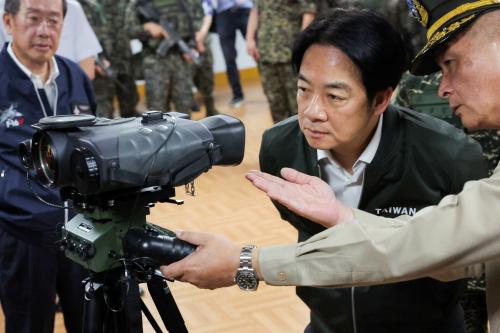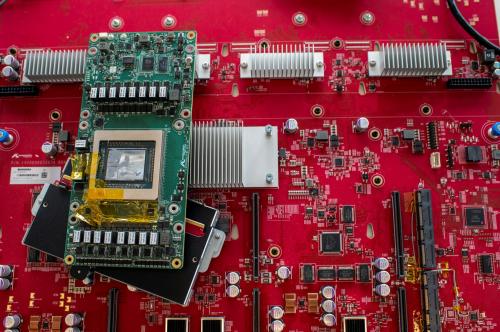UNITED STATES: South Asia Agenda
EVENT: President Bill Clinton is currently making the first US presidential visit to South Asia for over 20 years.
SIGNIFICANCE: Clinton’s trip comes at a time of great tension between India and Pakistan. The president will pursue a diplomacy aimed primarily at conflict avoidance and prevention.
ANALYSIS: President Bill Clinton is currently engaged in the first US presidential visit to South Asia for over 20 years, taking in Bangladesh (a country no previous president has visited), India (which then-president Jimmy Carter visited in 1978) and Pakistan (which no president has visited for over 30 years). Clinton’s trip has been designed to advance a number of economic and geopolitical objectives in the subcontinent. The president has recognised the accomplishments of Bangladeshi democracy in the face of economic adversity and Indian civilisation and its new high-technology economy; and he will urge the restoration of democratic government in Pakistan. Most significantly, the president is encouraging dialogue between India and Pakistan to help prevent their relationship deteriorating further, lest the region slip into another war. To this end, he is emphasising non-proliferation measures, but also promoting practical steps to de-escalate the Kashmir conflict and reduce the chance of a war that could have repercussions well beyond South Asia.
India. Since India initiated an economic liberalisation programme in 1991, its economy has grown at a rate of about 6% annually, generating significant trade and investment opportunities for the United States:
- India’s 100 million-strong middle class is a major emerging market for US firms.
- Trade between India and the United States has grown at an average rate of 30% in 1994-99 (it now stands at 12 billion dollars and could increase to 20 billion dollars in the near future).
- India requires hundreds of billions of dollars of investment in power, telecommunications and infrastructure development, which should generate substantial opportunities for US investors.
- India’s software exports are growing at a rate of 50% annually, and could reach 50 billion dollars by 2008. In recognition of the country’s success in the high-tech field, Clinton yesterday announced that a US-India Science and Technology Forum would be set up to promote research and development and technology transfer between the two countries.
These developments are beginning to have an impact on relations between the two countries, and lobbies promoting even stronger ties have emerged in both the United States and India, especially in advanced technology sectors.
Pakistan. Pakistan is a pivotal state for Washington:
- It occupies a strategic position at the nexus of the Middle East, South Asia and Central Asia.
- It has strong economic and strategic links with Islamic states (and is a key player within the Islamic world), in addition to being very close to China. Moreover, within the country there is a struggle between moderate and more extreme varieties of Islam.
Clinton’s visit to Pakistan will provide an opportunity to further US strategic interests in the country; reiterate US support for the protection of human and civil rights; and encourage an open-ended dialogue between India and Pakistan over Kashmir. The vast majority of Pakistanis want a free and democratic society and are concerned about the prospects of the ‘talibanisation’ of the country. Clinton will probably raise the issue of Pakistan’s alleged sponsorship of terrorism (see OADB, January 11, 2000, III) and also encourage an eventual return to democratic government in the country.
Bangladesh. Clinton’s visit to Bangladesh, a country Henry Kissinger once derided as a “basket case”, has emphasised the considerable achievement of Bangladeshi democracy in the face of poverty, and the importance of regional cooperation (Bangladesh was one of the originators of the South Asian Association for Regional Cooperation). Bangladesh benefits from multilateral and US economic aid; offers opportunities for US investment (especially in oil and gas exploration); and has participated in international peacekeeping missions. Overall, the United States has a strong interest in maintaining good relations with Dhaka.
Regional tensions. Clinton is visiting South Asia at a moment of high tension between India and Pakistan (see OADB, January 13, 2000, III; and OADB, January 4, 2000, II). Some observers of the two countries have never seen them as aggrieved with each other since their last war in 1971:
- The limited war that the two countries fought in the Kargil region of Kashmir in 1999 was India’s first televised conflict. Furthermore, the plane hijacking in Afghanistan that humiliated the Indian government last Christmas Eve, which New Delhi has accused Pakistan of backing, was also the first such event (involving Indians) to be shown on the country’s television screens. Both incidents inflamed opinion in the country, and increased the level of resentment towards Pakistan.
- In Pakistan, the military government appears confident that increasing pressure on the Indian government will bring it to the negotiating table. Islamabad asserts that the Indians cannot be trusted, and both the leader of the country’s military regime, General Parvez Musharraf, and his usually prudent Foreign Minister, Abdul Sattar, have suggested that the Indians orchestrated the hijacking of their own aircraft in Afghanistan last December.
Real progress on settling the India-Pakistan conflict over Kashmir must combine at least three elements:
- A serious Indian initiative on reducing its military presence in Kashmir and granting enough autonomy to the region to meet Pakistani expectations (which is unlikely to happen in the near future).
- A Pakistani realisation that its maximalist position on Kashmir is not only unlikely to succeed but that pursuing it could bankrupt the country. This needs to be accompanied by a Pakistani commitment to halting its support for militant groups in the region.
- Since these measures are unlikely to be achieved without outside mediation, the United States could play a role in trying to reconcile the two countries on the Kashmir issue. There is little that the president can do to immediately or directly resolve the conflict (to date, for instance, India has refused outside mediation in the dispute). However, Clinton could declare a long-term US commitment to resolve the dispute. This would require a peace process (that would move at a pace dictated by India and Pakistan) and could last for years.
Conflict risk reduction. Any solution to the Kashmir conflict can only occur in the long term. In the interim, India and Pakistan continue to engage in a low-intensity conflict, and there is no guarantee that a limited war will not (intentionally or unintentionally) escalate into a larger conventional conflict or even a nuclear exchange. The United States has major interests in war avoidance in the subcontinent, with the stakes even higher because of the introduction and possibility of the use of nuclear weapons. The president’s visit will, by building closer ties with the Indian and Pakistani governments, increase the prospects that they will respond positively to a US mediatory role, and thus help avert, or manage, any future crisis between the two. It may also make New Delhi and Islamabad more willing to accept US assistance in developing a range of confidence building and conflict-avoidance measures that could prevent a nuclear and missile arms race or an accidental war.
Nuclear proliferation. The United States failed to prevent India and Pakistan from developing and testing nuclear weapons, but it still has important nuclear arms control goals in the region:
- These include ensuring that New Delhi and Islamabad adopt strict export control restraints so that they do not transfer nuclear or missile technologies to other states. Both New Delhi and Islamabad already have a good record on this issue, and Clinton will encourage them to maintain it.
- It is also in the interests of all sides to avert a nuclear arms race in the region. Washington wants New Delhi and Islamabad to maintain a nuclear test moratorium and eventually sign the Comprehensive Test Ban Treaty (CTBT). The United States is likely to lift economic sanctions upon signature, but there are powerful voices in both countries that oppose the treaty. Neither Pakistan nor India are very likely to sign the agreement soon (New Delhi will probably not do so as long as there are doubts about the success of its 1998 nuclear tests).
- Washington is also encouraging both sides to adopt de-alerted nuclear postures and not to deploy warheads on their missiles. The long term goals of making New Delhi and Islamabad cease fissile material production and undertake missile restraints will, however, be deferred to a future administration.
Asian geopolitics. The United States has an interest in balancing any future Chinese expansion in Asia and India can play an important role in this respect. The sustained dialogue of the past two years between Deputy Secretary of State Strobe Talbott and Indian Foreign Minister Jaswant Singh has prompted a greater US effort to understand legitimate Indian concerns about a wide range of strategic and economic issues. However, there still exists a distrust among Indian elites about US intentions based on the country’s past support for Pakistan and China; the United States and India need mechanisms by which the two countries can better coordinate their activities, explore their differences, and reduce the high level of misperception on both sides. These could include periodic summits between the president and India’s Prime Minister, regular policy and defence talks, and greater dialogue between the two countries over a range of economic, political and strategic issues. Although India is unlikely to accept, and the United States is not about to offer, any military alliance between the two, strategic cooperation between the two countries could help to stabilise the balance of power in Asia. Clinton’s visit could provide the momentum for such cooperation.
CONCLUSION: Clinton’s trip will not achieve a major political or economic breakthrough, but could mark the beginning of a new US-India relationship. This would oblige Washington to recognise and welcome India’s position as a major state in Asia.


Commentary
The Economic and Geostrategic Stakes in South Asia
March 23, 2000